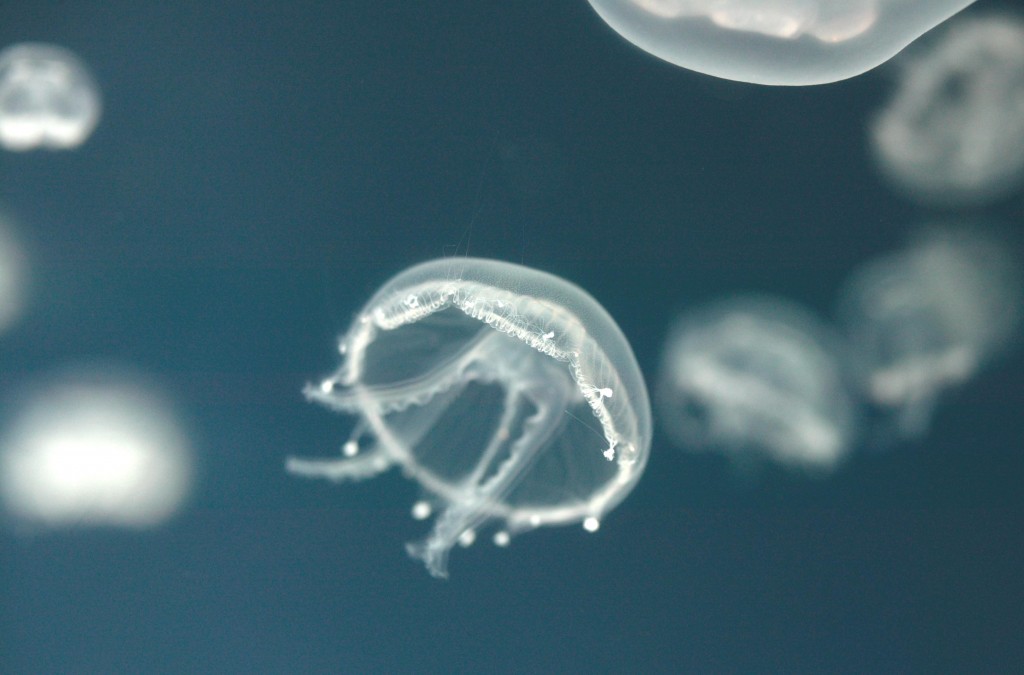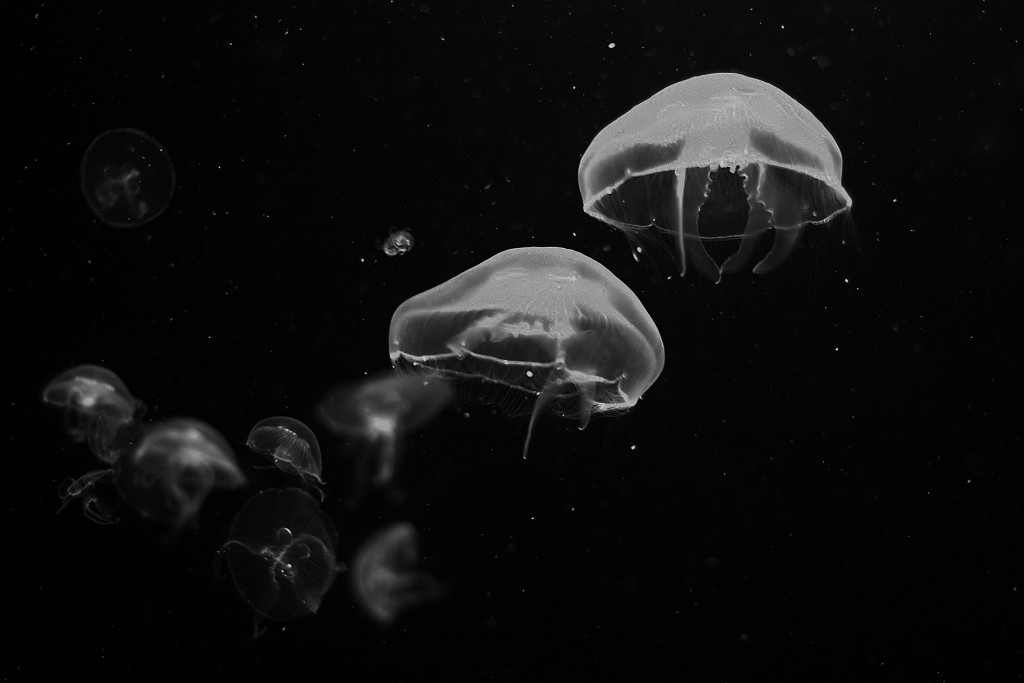Bristol Aquarium is awash with dozens of jellyfish as part of a captive breeding programme for the mysterious ocean wanderers.
The horde of moon jellyfish, the collective term is a ‘smack’, are part of a breeding programme for the marine predators – famed for their stinging tentacles.
Moon jellyfish get their name from the four purplish ‘half moons’ on top of their transparent ‘bell’. This bell can reach up to 40cms across and has stinging tentacles and four frilly mouth tentacles hanging below.

Bristol Aquarium’s David Waines said: “Jellyfish are truly fascinating creatures; extremely effective predators and capable of travelling great distances, despite the fact they have no brains, no bones and are made up of 95 per cent water!”
Although deadly to their prey, the moon jellies’ tentacles are only slightly venomous to humans, usually causing mild pain and a burning sensation.
Some fish fry, including haddock and horse mackerel, have developed immunity to the stinging cells and shelter among the tentacles, safe from predators.
Visitors can see the jellyfish in specially-constructed displays which mimic life in the open ocean and even have their own internal currents.
“The vast majority of jellyfish species aren’t harmful to humans and those that are don’t do it on purpose; they use their stinging tentacles to catch prey,” explained David.
“As well as being incredible creatures in their own right, jellyfish also play a key role in the ecology of the critically-endangered leatherback sea turtle.
“The more we can find out about them the better we will be able to help protect the turtles,” he added.
There are over 200 known species of jellyfish. They come in a huge variety of shapes and sizes. The largest is called the lions’ mane which has tentacles that grow over 100 feet.

Issued by Bristol Aquarium. For more information and to arrange interviews and picture opportunities please contact Hannah Worrall on 0117 929 8929.
‘SMACK’ OF JELLYFISH AT BRISTOL AQUARIUM
Comments are closed.
